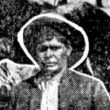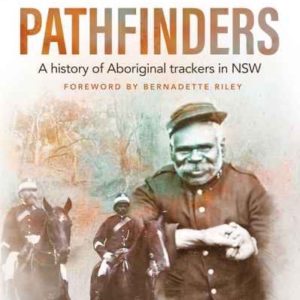Loading map...

Tracker Tommy was based at Brewarrina in 1874 and throughout the year he undertook a variety of jobs. Unfortunately, no personal details about Tommy are known at this time [ref]An Aboriginal man known as McElligott’s Tommy was arrested on suspicion of having killed another Aboriginal man at a camp near Brewarrina in July 1876 (Maitland Mercury and Hunter River...
Learn More ►Mount Boppy probably has the record for the shortest tenure of a tracker in NSW. A small gold-mining settlement 50 kilometres east of Cobar in Ngiyampaa country, a tracker was based at Mount Boppy for only the month of January 1904. Known only as Jack, he had previously served as the tracker at Cobar and then moved on to Mount...
Learn More ►Trackers were employed at Byrock Police Station from 1884 to at least 1938. The career of the first Byrock tracker, Jack Todhunter, was tragically short. He contracted typhoid fever two months after starting the job. He was transferred to Dubbo Hospital when his condition deteriorated and he passed away there on 10 March 1885. Little is known about Todhunter. He...
Learn More ►Jack "Smart Gui" Simpson was born along the Barwon River between Boorooma and Brewarrina in about 1880. Little is known about his parents, Jack Simpson Snr and Louisa Khan. Louisa is thought to have moved to Orange where she passed away. Jack told stories to his family of tracking Jimmy and Joe Governor in 1900 after the Breelong massacre near...
Learn More ►Sam Bell was born at Hay in the late 1860s. Oral history suggests that he survived a massacre at Hay and later moved to Coonamble where he was employed as the tracker in 1889. Three years later he married Annie Duncan of nearby Bullarora Station. The couple had eight children, including May Bell who was born at Coonamble in...
Learn More ►Trackers were placed at the Mudgee Police Station for almost a century. George Miranda was part of the team who captured Foley, one of the robbers of the Mudgee mail in October 1863. A newspaper report indicates that he shared in the reward of £500 [ref]Sydney Morning Herald 24 October 1863.[/ref]. Many of the early trackers are known only by...
Learn More ►George Sharpley of Goodooga was born in 1863. The names of his parents are unknown, but it is likely that he had a white father and an Aboriginal mother. His totem was pademelon and he belonged to the Kubbi section. Sharpley was probably an initiated man as he was asked in 1897 to carry a message stick inviting an Aboriginal...
Learn More ►A contemporary of Alex Riley, Frank Williams was a tracker who also received numerous accolades throughout his career. Williams was born in the country between Gundabooka and Toorale in the 1870s to Edward Williams and an Aboriginal woman named Fanny Hippi. He is associated with the Ngemba speaking peoples south of Bourke. After working as a labourer, he was appointed...
Learn More ►
 This website explores the history of Aboriginal trackers in NSW from 1862 when the current NSW Police Force was established through to 1973 when the last tracker, Norman Walford, retired. You can read about the lives of individual trackers and some of the incredible tracking feats they...
This website explores the history of Aboriginal trackers in NSW from 1862 when the current NSW Police Force was established through to 1973 when the last tracker, Norman Walford, retired. You can read about the lives of individual trackers and some of the incredible tracking feats they...

There were over 200 NSW police stations that employed Aboriginal trackers between 1862 and 1973. Many were concentrated in the central-west and north-west of the state, the agricultural and pastoral heartland of NSW. This is because one of the main jobs of trackers was to pursue sheep, cattle and horse thieves. Trackers sometimes lived in small huts out the back...
Learn More ►
Pathfinders book Pathfinders, A history of Aboriginal trackers in NSW, written by Dr Michael Bennett and published by NewSouth, is now available from all good bookstores. Click on the link below to order your copy. https://www.abbeys.com.au/book/pathfinders-a-history-of-aboriginal-trackers-in-nsw.do Early History Since the beginning of the colony, government agencies, explorers, surveyors and members of the general public called upon the tracking...
Learn More ►